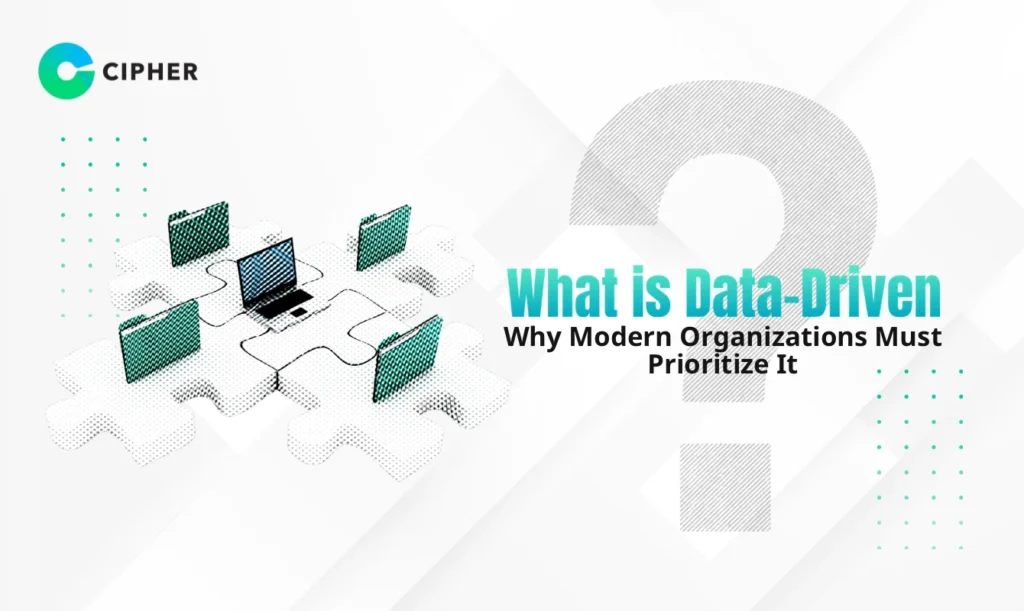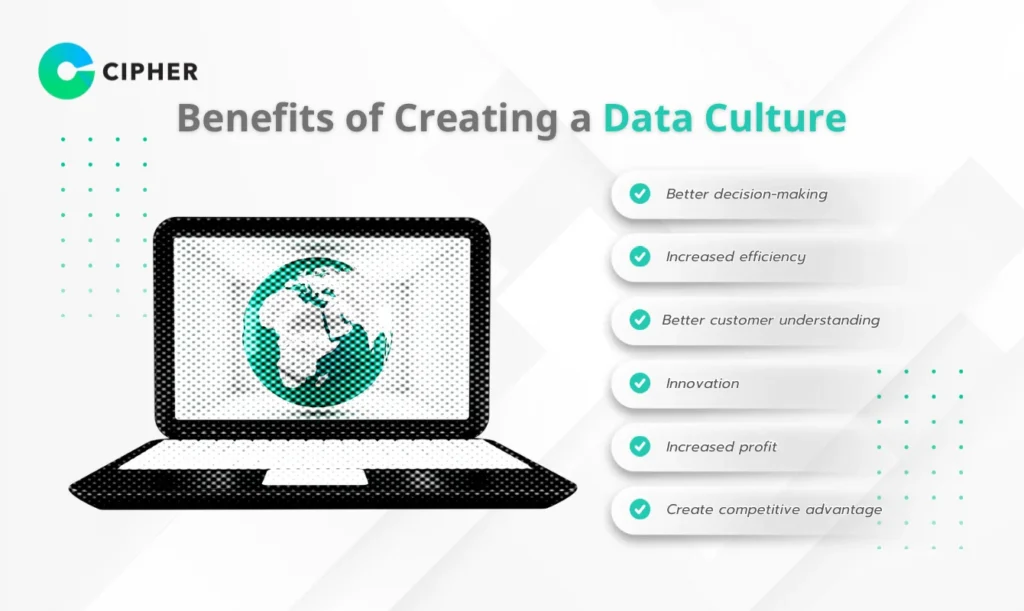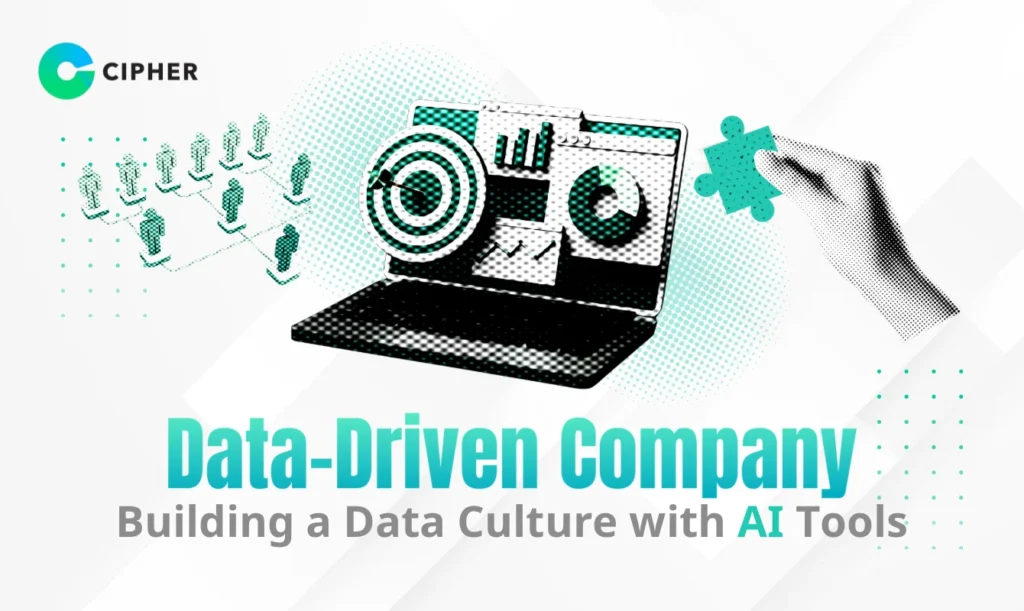Many organizations still make decisions based on habit or “gut feeling” rather than data, despite the fact that readily available data can dramatically improve decision accuracy and reduce risk. This is why becoming Data-Driven is no longer a complex concept or fancy term used only in boardrooms. It’s a mindset that helps organizations work with direction and see the bigger business picture clearly.
In this article, CIPHER will show you how building a Data Culture in your organization is practically achievable, along with introducing tools like AI and Business Intelligence, and Software Development services that will ensure every decision you make is “always backed by data.”
Table of Contents
What is Data-Driven? Why Modern Organizations Must Prioritize It

Data-Driven refers to a working approach that is primarily driven by data. It views data not merely as something that “exists” but as a strategic asset (Strategic Asset) valuable for decision-making and planning at all levels of the organization. Data Utilization in Organizations can extend to management, organizational strategy, resource allocation, and even critical policy formulation, helping organizations work faster, more accurately, and adapt better in an ever-changing environment.
In an era where customers change their minds faster than a blink of an eye, slow or incorrect decisions can mean lost opportunities or, worse, business failure. This is why modern organizations must become Data-Driven Companies for survival and sustainable growth.
Data Culture Is the Heart of Modern Organizations
Data Culture doesn’t emerge simply because you’ve installed some data analytics software. It’s about changing the mindset of everyone in the organization, from making decisions based on feelings or guesswork to using data as a guide. Organizations with strong Data Culture have clear, observable characteristics:
- Everyone in the organization has access to necessary data: No information hoarding by certain groups; everyone can conveniently access data relevant to their work.
- Decisions at all levels are data-referenced: Whether it’s major company-level decisions or small departmental ones, everything is data-supported.
- Every employee has basic knowledge in reading and analyzing data: Everyone understands how to view and interpret data without waiting for experts to explain.
- There is transparency in data sharing between departments: Departments share data with each other, avoiding the “my data” or “my department’s data” mentality.
- Management supports investment in data technology and training: The organization prioritizes continuous development of data skills and tools.
How to Build a Data-Driven Culture in Your Organization
Adjust the Perspective of Executives and Employees
Great change begins with thought. Executives must set examples in using data for decision-making, not just talking about its importance but demonstrating it. Meetings should begin with clear data.
Additionally, training should be provided to employees at all levels to understand the importance of data and know how to use basic data analysis tools. When everyone sees that data isn’t scary but a tool that makes work easier, resistance to change will decrease.
Start with Ready Departments
Changing the entire organization at once can create confusion and resistance. A better option is to start with departments that are ready and clearly see the benefits of using data, such as marketing or sales.
When pilot departments see good results, such as increased sales or reduced costs, they become ambassadors of change who will help spread this concept to other departments. Small successes will create ripples for wider change.
Establish a Systematic Data Collection System
Scattered data is like scraps of paper blowing in the wind – useless and difficult to utilize. Setting up a good data storage system is therefore an important foundation of becoming a Data-Driven Company. A good data storage system should have key characteristics that will help maximize data utilization efficiency:
- Data Center: Data is in one place or can be linked, making it easy to search and access, such as using a CRM system for customer relationship management.
- Secure: Has a system to prevent data leaks, especially important or personal data.
- Easily Accessible: Those who need data can access it without complications, with an appropriate permissions system.
- Up-to-date: Data is regularly updated to ensure decisions are based on the latest information.
- Standardized: Uses consistent data storage formats across the organization, making data integration easy.
Use BI and AI Tools as Helpers
In an age of vast data, manual analysis is no longer feasible. This is why Business Intelligence (BI) and AI tools have become important allies in creating a Data Culture. These tools offer numerous benefits that will help elevate data usage in the organization:
- Analyze large amounts of data quickly: Transform millions of raw data points into actionable insights in a short time.
- Create Intelligent Reporting Systems that update in real-time: Display current business status with easy-to-understand dashboards that update automatically.
- Create accurate predictions from historical data: Forecast future trends to prepare responses in a timely manner.
- Discover patterns that humans might overlook: Find hidden relationships in data leading to new business opportunities.
- Make data access easy for everyone in the organization: Even those without technical skills can use and understand data.
CIPHER Company Limited specializes in applying BI and AI technology to businesses. With experience working with many leading organizations, we understand professional data management needs and methods.
Data-Driven Organizational Transformation
Data-Driven Organizational Transformation isn’t just about technology but about people, processes, and culture. Successful transformation must integrate all three aspects. Consider these steps to transform your organization:
- Set clear goals: What problems do you want to solve with data? How do you want to measure success?
- Create a data team: Gather data experts and representatives from various departments to jointly drive change.
- Invest in infrastructure: Choose appropriate technology for storing, processing, and analyzing data.
- Create easy-to-understand dashboards: Make data accessible to everyone in the organization through user-friendly dashboards.
- Celebrate success: Recognize teams that use data in decision-making and achieve good results.
This transformation may take time, but the results are worth the wait. Organizations driven by data have a clear competitive advantage.
Benefits of Creating a Data Culture

Investing in building a Data Culture may seem like a burden in the short term, but the long-term benefits are enormous. The main advantages organizations will receive include:
- Better decision-making: Reduce risk from instinct-based decisions, replaced by data-backed decisions.
- Increased efficiency: Identify problems and opportunities faster, helping respond to market changes in a timely manner.
- Better customer understanding: Analyze customer behavior and needs deeply, leading to more targeted products and services.
- Innovation: Discover new opportunities hidden in data, opening paths to unprecedented products or services.
- Increased profit: Reduce costs from more efficient operations while increasing revenue from better market understanding.
- Create competitive advantage: Surpass competitors who still use traditional decision-making methods not fully based on data.
Examples of Organizations Succeeding with Data-Driven Approaches
Nothing inspires better than real success stories. Look at these case studies demonstrating the power of being a Data-Driven organization:
- Netflix: Uses user viewing behavior data to recommend content and decide what series or movies to produce, making them highly successful in creating content that resonates with viewers.
- Amazon: Uses data-driven recommendation algorithms to increase sales, with 35% of sales coming from product recommendations.
- Starbucks: Uses data from customer apps to decide on new store locations, menu additions, and promotions that will attract customers.
- Kasikorn Bank: Uses customer behavior data to develop digital financial services that meet user needs, making K PLUS app Thailand’s most popular banking app.
These organizations didn’t succeed by accident but because they seriously invested in building a Data Culture and used data as a compass in every decision.
CIPHER Services to Help You Build a Data Culture in Your Organization (Data-Driven Company)
CIPHER Company Limited specializes in IT Solutions and Digital Marketing ready to help your organization fully transition to becoming a Data-Driven Company.
Our Services to Help You Build a Data Culture in Your Organization
- Specialized Software Development: Create systems specifically designed for data storage and analysis.
- Intelligent Reporting Systems: Create dashboards that help clearly visualize your business overview.
- In-depth Data Analysis: Use AI technology to find insights hidden in your data.
- Training: Prepare your team to use data efficiently.
Regardless of your business industry, small or large, we are ready to help you become a truly data-driven organization.
Conclusion
Being Data-Driven isn’t just a fancy term used in meetings but a way of thinking and organizational culture that will completely transform your business. In a complex and rapidly changing world, decision-making based solely on instinct is no longer sufficient. Starting to build a Data-Driven Culture doesn’t need to be complicated. Begin by instilling the importance of data in your team, choose a pilot department, set up a good data storage system, and use BI and AI technology as helpers.
CIPHER Company Limited is ready to be your partner on the journey to becoming a Data-Driven organization. With our expertise and long experience, we will help make your Data-Driven Organizational Transformation smooth and successful.
Frequently Asked Questions
What is Data-Driven Culture?
Why do organizations need to switch to data-driven decision-making?
How to start if an organization doesn't have a Data Analyst?
What tools help create a Data-Driven organization?
- Business Intelligence (BI) systems: Combine data from multiple sources and visualize it to help with understanding.
- AI data analysis: Analyze trends, customer behavior, or predict what will happen.
- Real-time reporting dashboards: Monitor results immediately, adjust strategies in a timely manner.
- Cloud Data Platforms like BigQuery, Redshift: Store large amounts of data securely and flexibly, supporting organization-level analysis.





